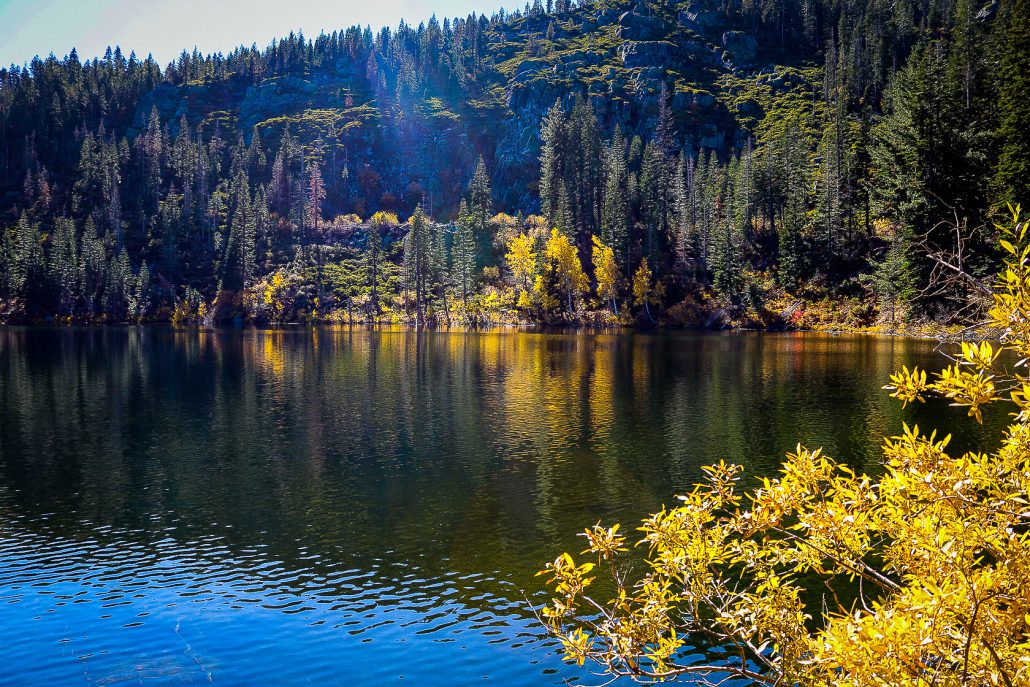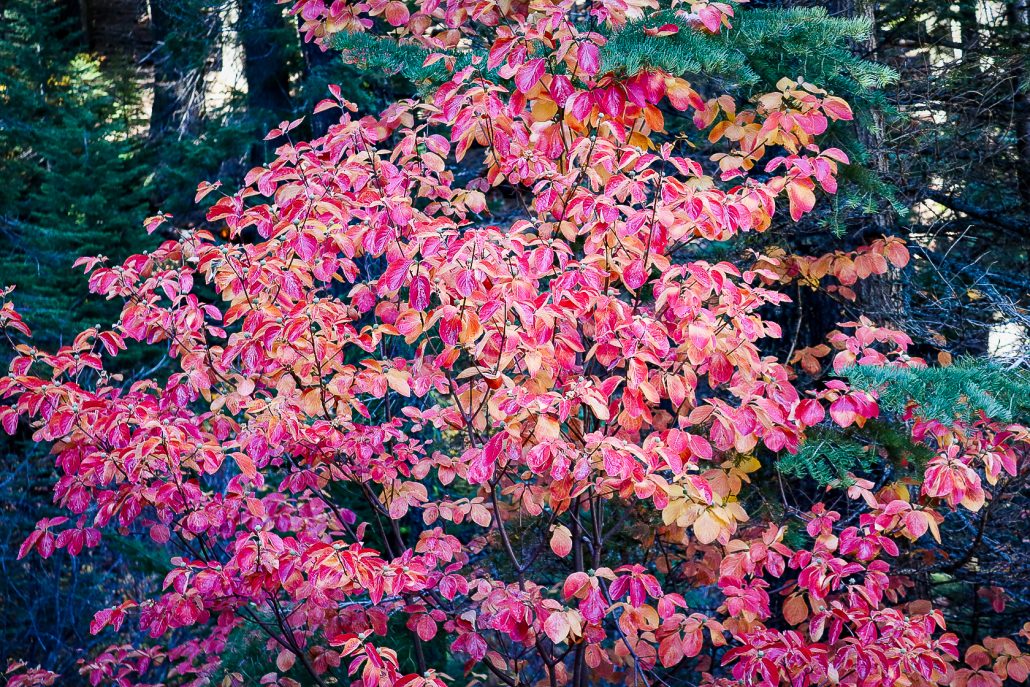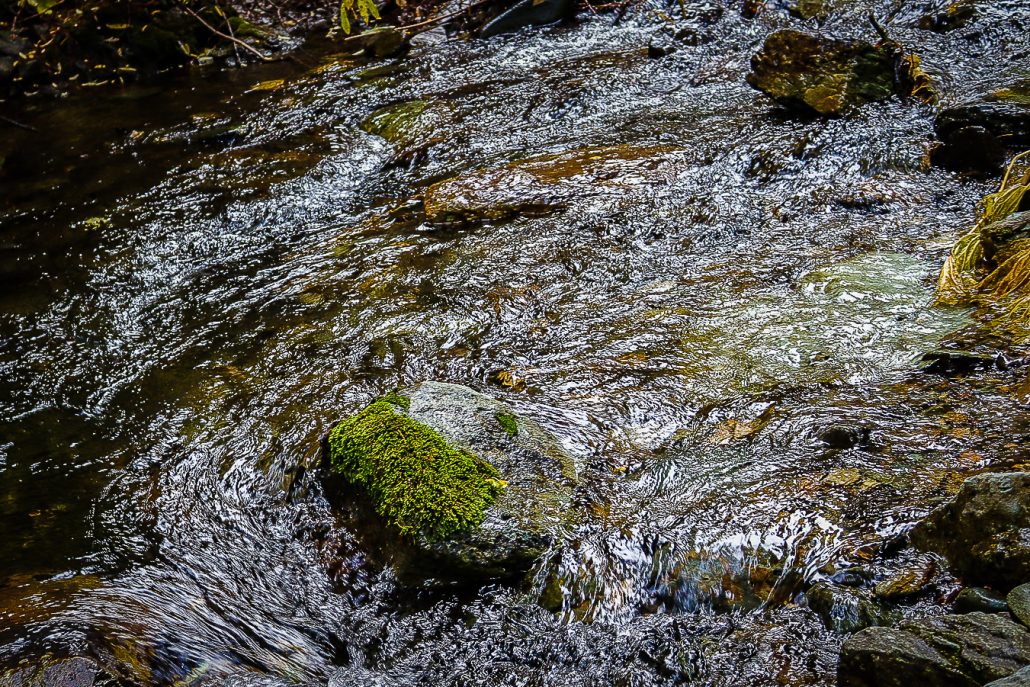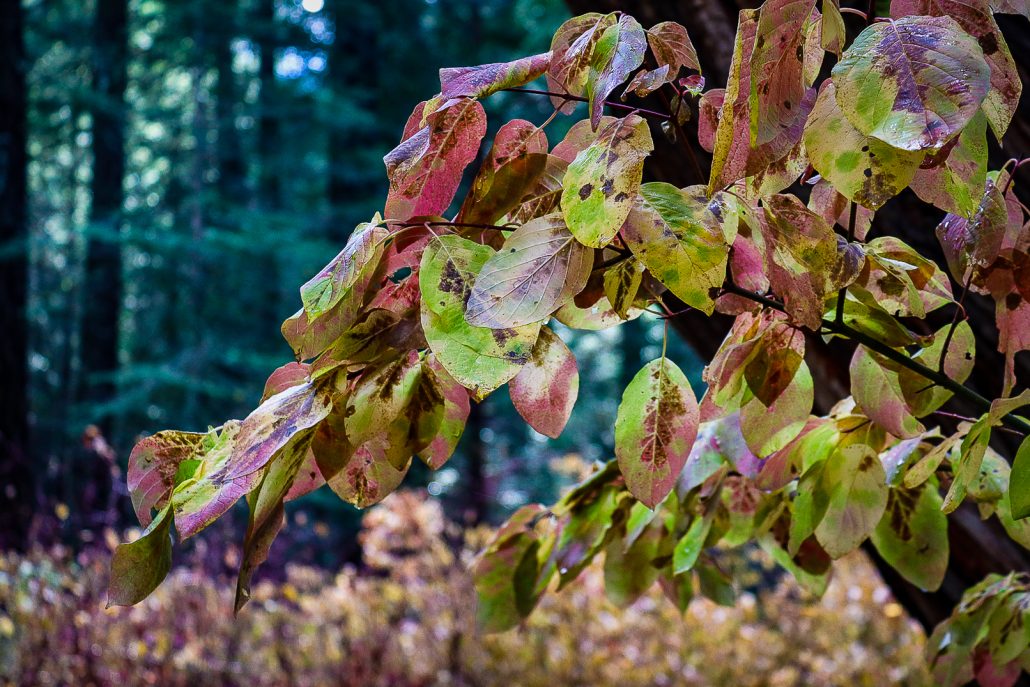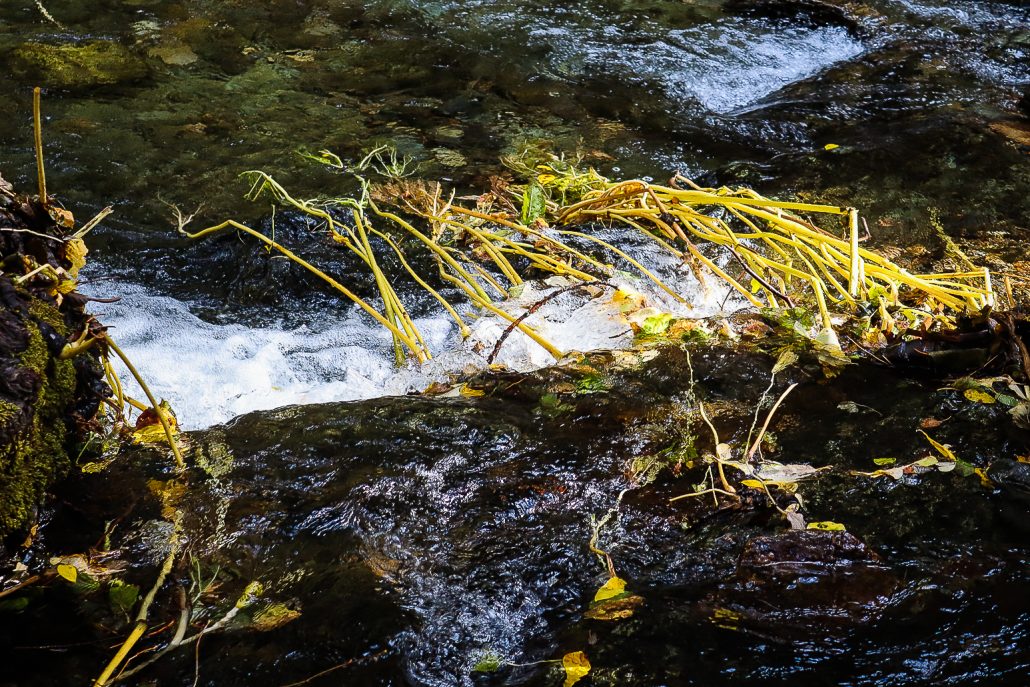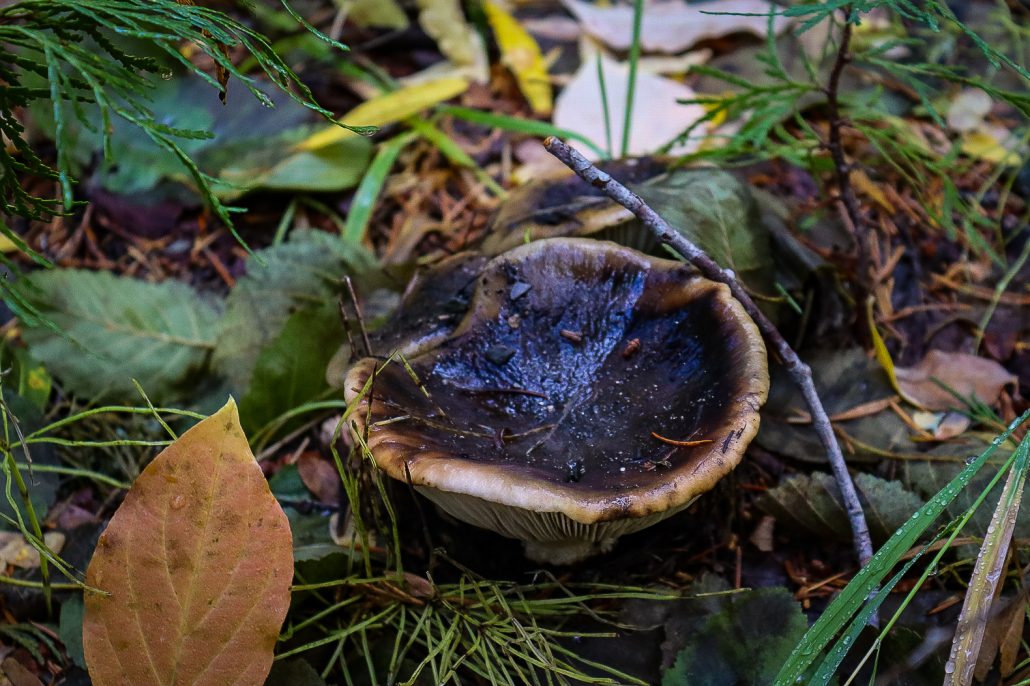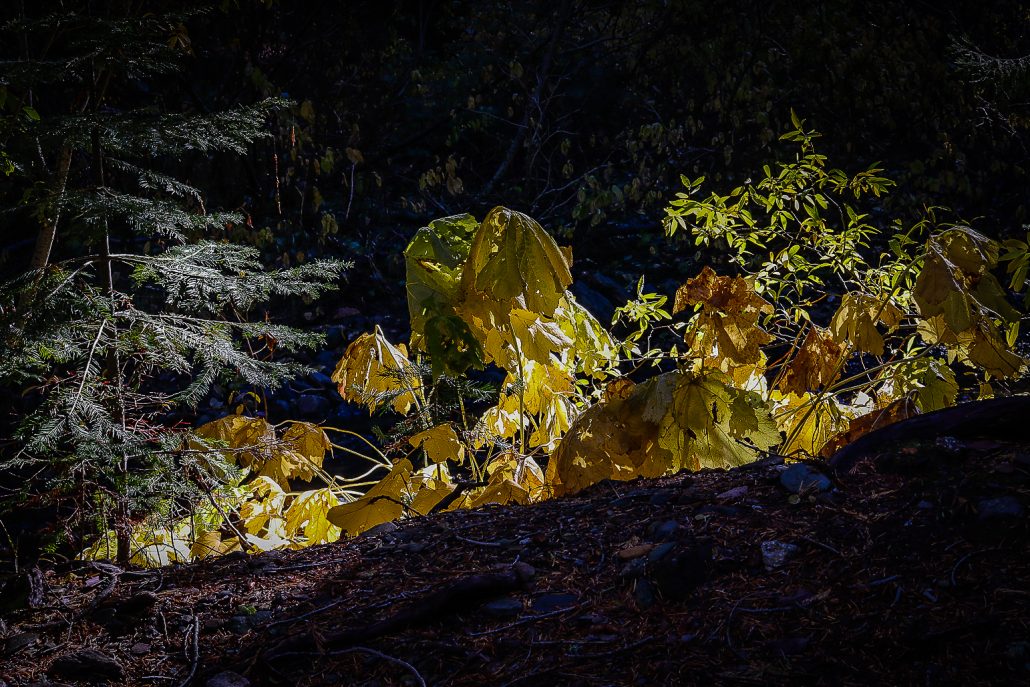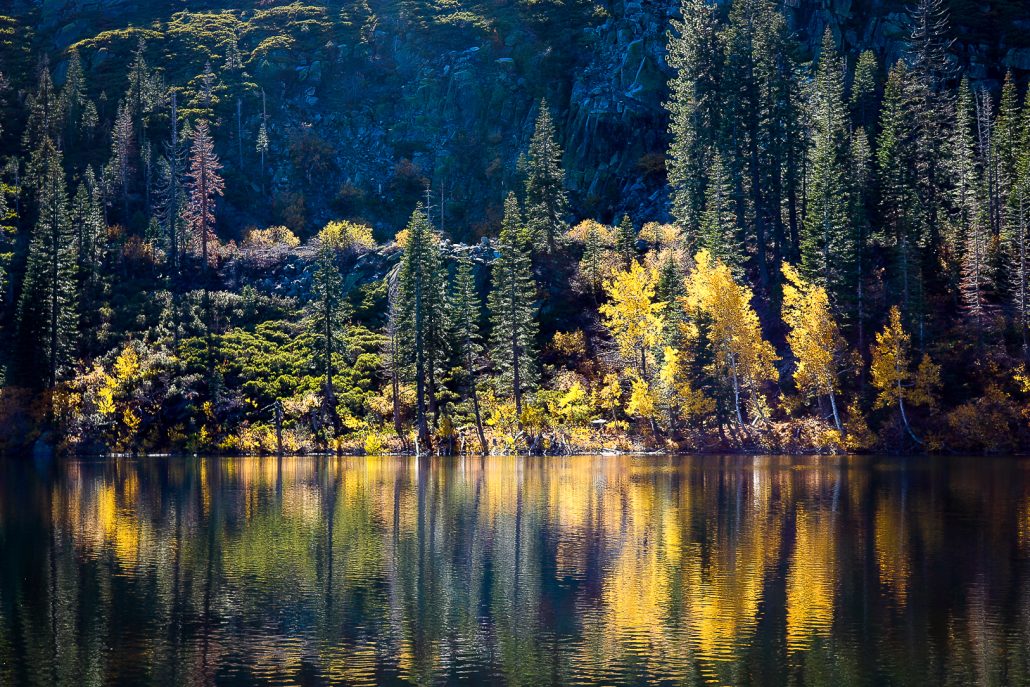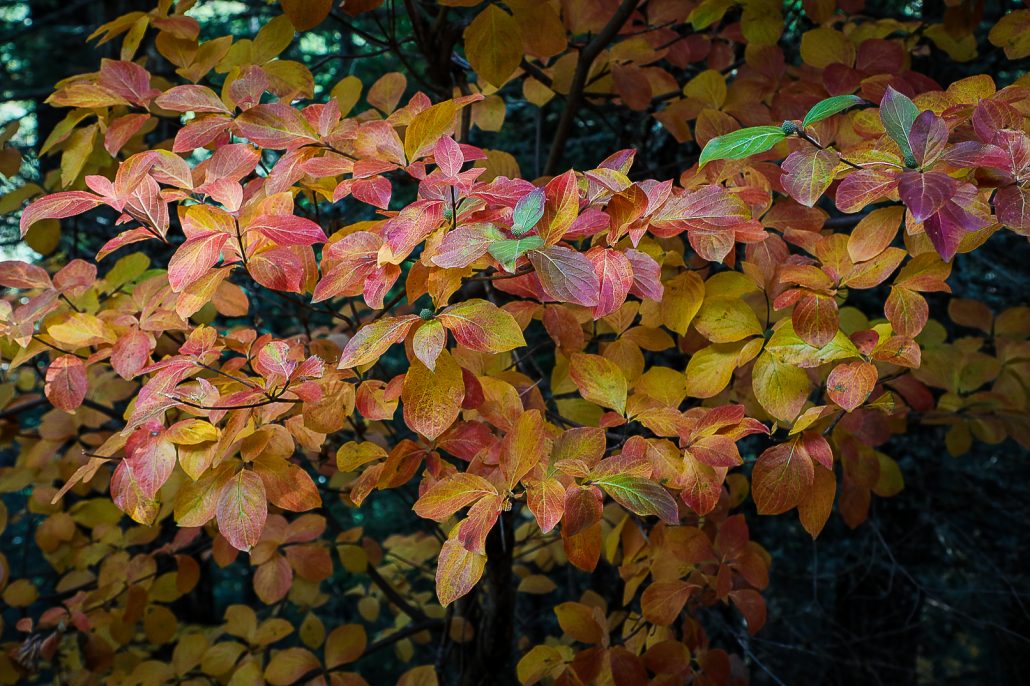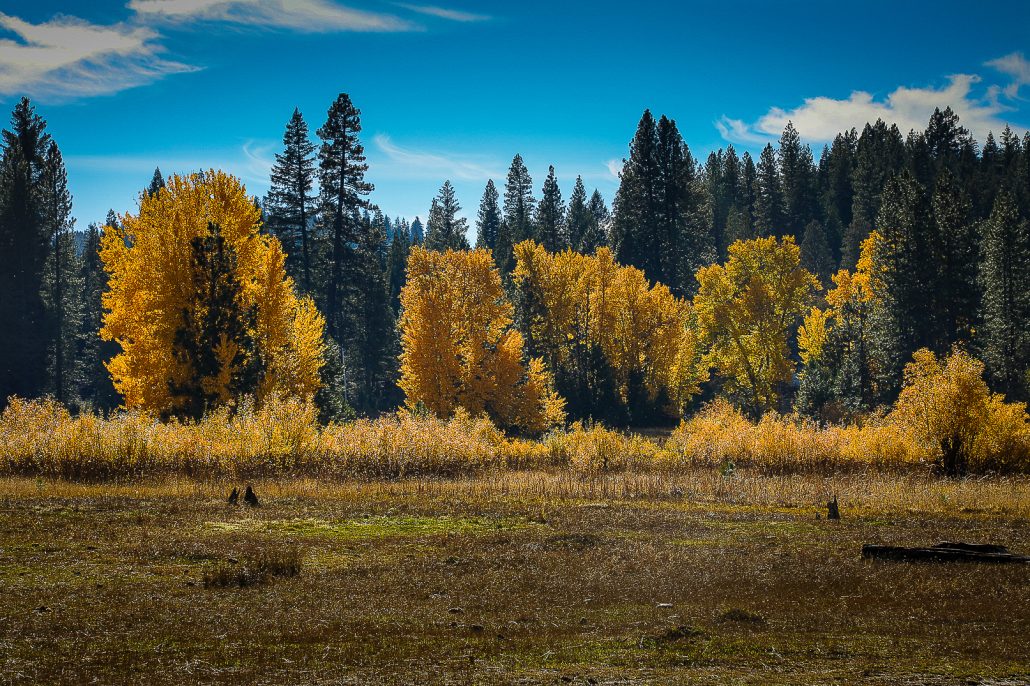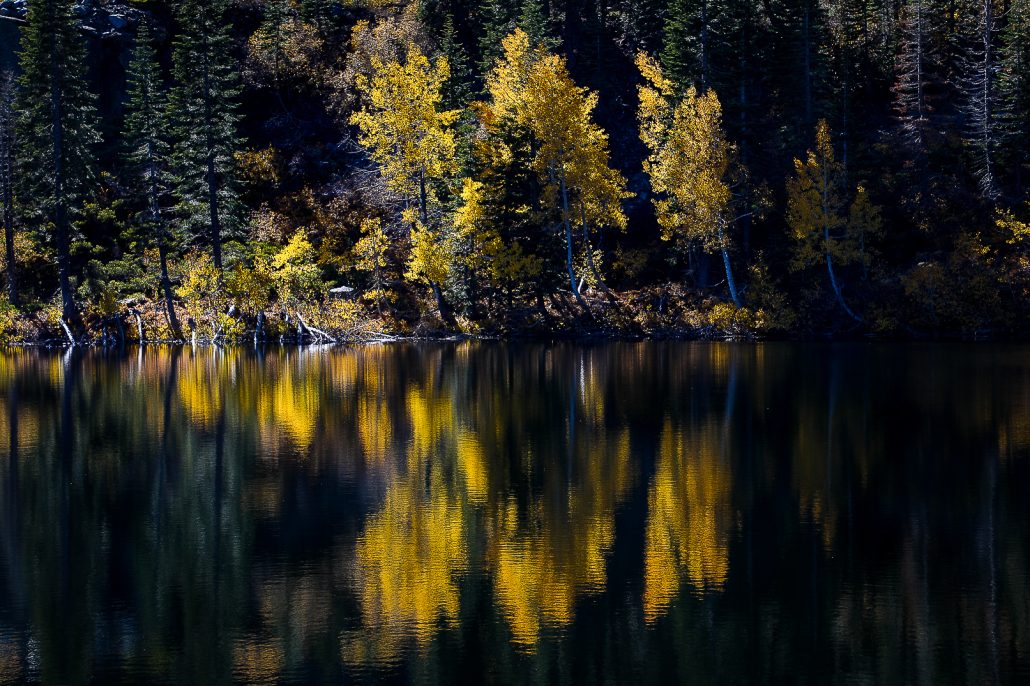A Child’s Perspective
A grandparent is blessed when one’s grandchild shows interest in the interests of the grandparent. As one, I know the feeling. It’s an intense feeling of love and bonding.
So, when Michael Beatley’s granddaughter, Liliana, asked if he might teach her how to take photographs, he did what grandparents do best. He passed on what he knew and loved to someone he knew and loved more deeply.
They packed up cameras and headed from Meadow Valley, near Quincy, to Thompson Lake. It was early afternoon and the aspen were reflecting in the lake. “A perfectly beautiful day,” he reminisced. On the drive back toward Meadow Valley on Big Creek Rd, the road was lined with dogwood, black oak and bigleaf maple, all dazzling in their autumn dress.
The sunlight was hotter in the afternoon than a schooled photographer would prefer, but after all this was Liliana’s first day in school … photography school. There’ll be time for more technical lessons later. This was all about fundamentals.
Michael had spent “some pre-shoot time going over the SL3 Canon she would use.” He talked about composition and other basics, but also encouraged her to shoot whatever she thought would make a great photo. After the initial instruction, she was on her own with no direction as to what to shoot.
There were, of course, blurred shots due to her quickness with the shutter, but many were quite well-focused, he boasted. (click to enlarge)
- Thompson Lake (10/29/21) Liliana Beatley
- Dogwood, Big Creek Rd (10/29/21) Liliana Beatley
- Eddy, Big Creek (10/29/21) Liliana Beatley
- Dogwood, Big Creek Rd (10/29/21) Liliana Beatley
- Big Creek, (10/29/21) Liliana Beatley
- Spent dogwood, Big Creek Rd (10/29/21) Liliana Beatley
- Spent Indian Rhubarb, Big Creek (10/29/21) Liliana Beatley
- Mushroom, Big Creek Rd. (10/29/21) Liliana Beatley
- Spent Indian Rhubarb, Big Creek Rd (10/29/21) Liliana Beatley
- Thompson Lake (10/29/21) Liliana Beatley
When they got back and I’d encouraged him to send hers along, as well, he said, “All of her shots were her own, and I was surprised at what she shot. I never saw the mushroom, the backlit, faded Indian rhubarb. The Dogwood shots were all her own … for me it was a special day.”
Michael, I’m sure it was for Liliana, as well.
- Dogwood, Big Creek Rd (10/29/21) Michael Beatley
- Meadow Valley (10/29/21) Michael Beatley
- Thompson Lake (10/29/21) Michael Beatley
- Thompson Lake (10/29/21) Michael Beatley
- Thompson Lake, Plumas County – Peak (75 – 100%) GO NOW!
- Big Creek, Plumas County – Peak (75 – 100%) GO NOW!
- Meadow Valley, Plumas County – Peak (75 – 100%) GO NOW!
![]()



